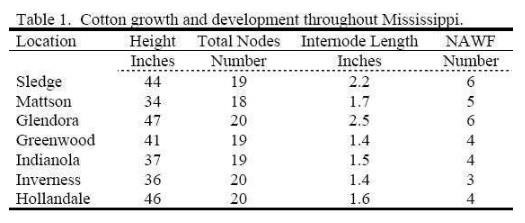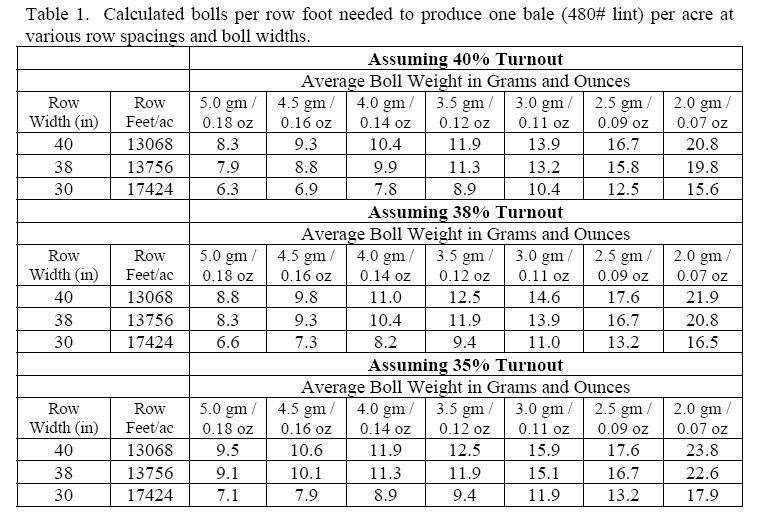Cotton Agronomics : Estimate Cotton Yields By Boll Count
Crop Update: The latest National Agricultural Statistics Service crop report indicates that 62% of the crop is in good to excellent condition. In addition, soil moisture was rated as adequate to surplus in 86% of the state. The crop as a whole appears to be in good shape; however, some dryland cotton that has not received some of the rainfall that other areas have received is short in stature and is beginning to open bolls. In areas that have received adequate rainfall and/or irrigation, plant height and vegetative growth have required application(s) of plant growth regulators. Applications totaling 40-60 ounces of mepiquat chloride are not uncommon in many of these areas.
Although we have not endured any hurricanes to date, excessively tall cotton may be subject to increased damage due to hurricanes and/or straight line winds.

Estimating Yield by Boll Counting: As we approach mid- to late-August and the crop is cutting out or approaching cut out thoughts begin to gravitate toward potential yield. Estimating cotton yield through boll counting can often be misleading as there are a number of factors that can influence final yield. These may include variation in boll size, lint percent, weather conditions, harvest losses, and ginning losses. Having said that, the following information is provided as a guide for estimating cotton yield by counting bolls.
1. Count all harvestable bolls in at least 10 feet of row at several random locations within the field. Use this information to calculate an average number of harvestable bolls per row foot.
2. Establish an estimate of boll size. There are two different ways in which this may be done.
1) Randomly pick all the seedcotton from 50 to 100 bolls representing all boll sizes on the plant. Weigh the sample on an accurate scale calibrated in grams. Divide the weight in grams by the number of bolls picked and this will give an approximate boll weight for the field. Several samples should be collected and weighed. 2) Pick all seedcotton from all harvestable bolls on each of ten randomly selected plants. Weigh the sample on an accurate scale calibrated in grams. Divide the weight in grams by the number of bolls picked and this will give an approximate boll weight per field. Several samples should be collected.
3. Once the average number of harvestable bolls per row foot and average boll size has been determined you can use the following tables (based on turnout) to determine how many bolls are needed per row foot to make a 480 pound bale of cotton. To determine yield in bales per acre, divide the number of bolls per row foot counted by the number required per bale.

Example: 38 inch rows, 15 bolls per foot, average boll weight of 3.5 grams and expected turnout of 38%. Under the section titled 38% turnout, go to the 38” row spacing line and across to the 3.5 grams per boll column and you will see that 11.9 bolls per row foot is needed to make a 480 pound bale of cotton. 15 bolls per foot divided by 11.9 equals an estimated yield of 1.3 bales per acre.
Cotton Defoliation Training: A cotton defoliation training seminar will be held on Friday August 28, 2009. The seminar will begin at 8:30 a.m. and will last approximately 2 hours. Speakers include: Dr. Chris Main – University of Tennessee – Physiology of Cotton Defoliation; Dr. Darrin Dodds – MSU – Cotton Defoliation Timing; Dr. Dan Reynolds – MSU – Cotton Defoliation Programs; and Dr. Tom Barber – University of Arkansas – Strengths and Weaknesses of Individual Products. The seminar will be conducted via interactive video conference to each interested county extension office in Mississippi. If you are interested, please contact your local county agent or area agronomist.
Source : Mississippi State University Extension Service